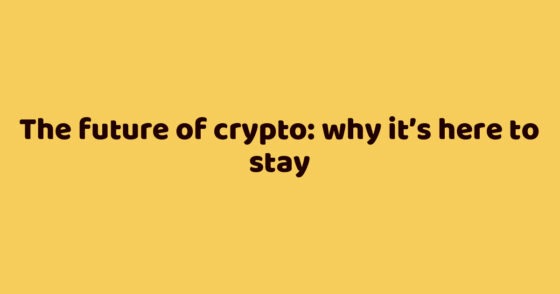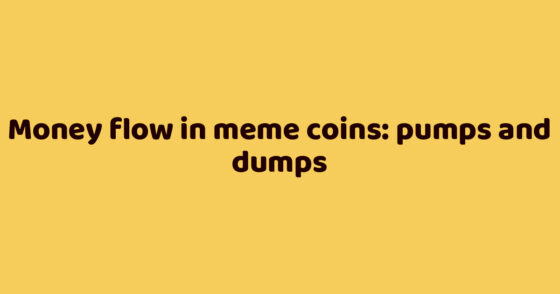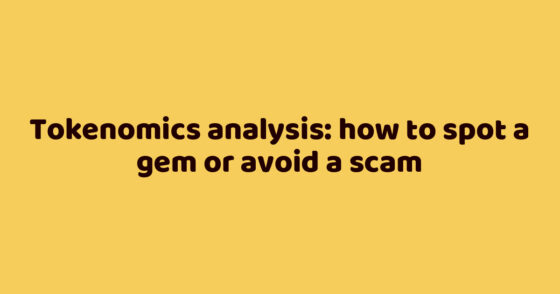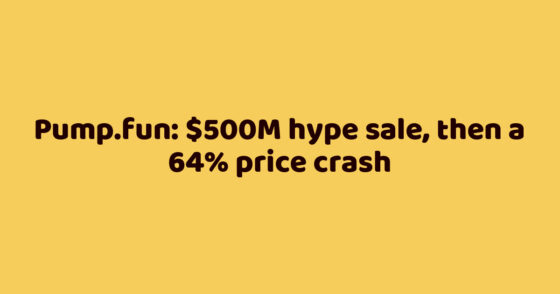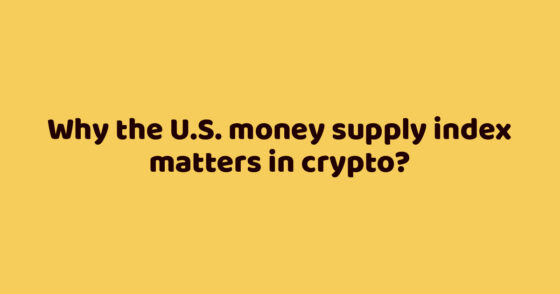I am a supporter of the approach not to make a beautiful fairy tale out of trading and investing in the cryptocurrency market, where money is made only by masters of their craft, some samurai who have dedicated themselves to the market, as well as the approach that there is some great trading system and it is worth learning or creating it and you will immediately become rich.
There are a lot of reasonable approaches that can make good money from time to time.
Some people choose to believe in some coin and hold on to it until it finally makes them rich. It looks like a game of roulette that lasts for several years. Maybe you get lucky, maybe not.
Who makes money
It is a bitter truth that highly paid teams make excellent research and trading systems, hard-won through thousands of backtests and mining ideas, and it is impossible to compete with them alone and with few resources.
There are exchanges that consistently make money on commissions. With project founders, it is more complicated, because we see only winners all the time, and do not notice many losers who created a project and issued tokens without recouping the cost of their creation. These are the majority, as in any entrepreneurial activity.
Is it possible for a regular investor and trader to make money in the cryptocurrency market?
Here you will often be flooded with banal general advice. That you need to count well, understand the mechanics of the market, blockchain, tokenomics, be aware of trends.
But I claim that there are factors that will reduce all efforts to make money to zero. That’s what we will talk about today.
There are several examples of people who make good money in the market without being masters of technical analysis or spending hours studying projects.
Many experienced investors and traders will confirm that the possibility of spending 10,000 hours studying the market does not guarantee success in this particular field of activity.
What then? The cryptocurrency market differs from many other classical markets in its manipulability and volatility, and this largely determines these 3 aspects, without which success in the game is practically impossible.
Risk Management
Risk is the only thing you can control in the market. No one knows exactly where the price of an asset will go in the next period. But you can clearly limit your risk.
The idea is simple: you are bound to make many mistakes in your investment and trading decisions. And these decisions should not be fatal for your investment.
Do not risk a large amount of capital in a single trade. This means that you should always have the possibility to make many mistakes and save your investment capital at the same time. This is obvious. But almost everyone neglects it at one time or another.
Mistakes will happen – that is a fact. Limit the risk per transaction, speculation or investment – it doesn’t matter. Limit the risk and give yourself a chance to survive the mistakes. You can do it in many ways, stop-loss orders, diversification, hedging, just fixing losses when they reach some limits.
Without risk management, trading investments will be great and the results will be much better than average, but only for a while, and then you will have a setback: at best you will lose all your profits.
It is easy to fool yourself. For example, sit out huge losses and take small profits. The market will forgive you many times, but eventually the movement against you will be too strong and the pullback will be insignificant.
On the contrary, by increasing the volume of the position when you have successfully entered the trend, you will be able to make a significant profit.
FOMO
FOMO is a psychological state when investors or traders enter a trade for fear of missing a chance for a significant profit.
This feeling negates all your analysis, understanding of the market, value of observations and success of the trading system. Entering a trade because you might miss a profit
The motivation for entering a trade should be: You see an advantage. You see an opportunity to make a profit that is greater than the loss. Or the profit will be so large that it will outweigh several losses.
The bottom line is that you should always weigh the probability of profit and the size of the profit against the risk.
FOMO is about focusing only on making a profit, regardless of the risk. The fear of not making a profit.
FOMO may not be destructive in individual trades, but it is the mathematical expectation that destroys it.
In most cases there are two scenarios:
You see a sharp spike in the price of some asset, and you jump in for fear of missing out on a profit – in most cases this will be a very poor entry into the trade, as the ratio of risk to potential profit will be one to one at best. In addition, because the trade is unprepared, you are unlikely to be in the position for most of the price movement, as you will rarely have much confidence in the correctness of the position, but will be afraid of “missing the profit”. Usually it is too late to enter a trade, “the locomotive has already left without you”.
From FOMO we sometimes enter into sharply declining altcoins because we are afraid of missing the “about to fly away” moment. I have often written that buying outsiders is a weak strategy as most tokens stay at the bottom. Under the influence of FOMO we find an insanely bearish coin in which a falling wedge has been formed for a long time, at such moments it seems “well, the price is so squeezed” that it will “definitely shoot up”. This is the moment when we enter a position too early.
Compared to the current situation, many people jumped into altcoins under the influence of FOMO not immediately after Trump’s inauguration, but in December. When some of the altcoins showed the high of the year and BTC broke the historical high. So now in the fall, many people bought alts without any positive signals.
Mistakes happen, but FOMO changes the trading results too much, decisions turn out to be too expensive.
Beating FOMO without psychologically abusing yourself is pretty easy. The whole story of fighting yourself is too time consuming, often useless, anyone who has been in the market for a long time will tell you several stories where they made crazy percentages quite rashly under the influence of FOMO jumping into a trade.
You can do it the other way around:
Make it a habit to enter the trade in by parts. You’ll do some analysis before each successive partial buy, and although you may get a worse price, you’ll let the profits accumulate, gradually increasing your position and eventually taking a comparable, if not larger, profit. However, if the price goes in the wrong direction, you will quickly have doubts about the wisdom of your decision, and it will be easy to exit a small losing position.
Or average out a correction, making the ratio of risk to possible profit qualitative.
Following the logic of buying in by parts, even now you can buy altcoins, with a small part of funds, because if BTC does not go to update the recent minimum, there may be a good recovery, as well as to jump into some token that has already shown +20% for the day, because sometimes such a rise ends in a hundred percent.
Failure to adapt to changing market conditions
The cryptocurrency market is constantly changing. Therefore, finding and perfecting a “perfect” strategy is often a waste of time. Even if you find a pattern that works, the market may change and you may have to start all over again.
When a pattern becomes obvious to most people, it stops working. If everyone knew for sure that BTC would reach $200,000 by the end of 2025, its price would be around $198,000 right now. In that case, it would have become something like a bond with a predetermined yield.
Let’s take an example from the stock market. There used to be a pattern: it was profitable to buy stocks on Friday night because their price usually went up on Monday. This phenomenon was described in Frank Cross’ (1973) study “The Behavior of Stock Prices on Fridays and Mondays”.
But then the market adjusted:
1. First, investors started buying stocks en masse on Friday nights, driving up prices.
2. Later, those who wanted to beat the market started buying on Friday afternoons and selling in the evening.
3. Then those who bought on Friday morning to sell in the afternoon joined those who expected to sell in the evening.
4. After many iterations, it was more profitable to buy on Monday than to sell, because the best prices were on that day.
This process shows how the market adapts to known strategies and renders them useless.
Why is adaptation important?
Market Volatility – Financial markets are dynamic and the cryptocurrency market is particularly volatile. News background, technological changes and market trends can dramatically change the behavior of assets.
Competition among participants – the more traders use the same strategy, the faster it loses effectiveness. The ability to quickly retool gives you an advantage over other market participants.
Survival in the long term – short-term success may be a fluke, but for stable earnings you need to be flexible in changing approaches depending on the market situation.
Ability to change analysis – a trader who can adapt is able to see new opportunities and seize them before others. And more importantly, to discard ways of analyzing the market that used to bring him money, but now no longer work.
Tips for fast adaptation
– Use algorithms and automation – Customized bots and algorithms help you react faster to market changes.
– Develop intuition through experience – practice and working with different scenarios will allow you to feel changes in trends faster.
– Work with different timeframes – analyze the market not only in the long term, but also in the short term to see changes faster.
– Work with scenarios – think through possible scenarios in advance and prepare actions for each.
– Learn to quickly abandon strategies that don’t work – the sooner you realize that the method has stopped working, the less losses you will incur. This is the hardest tip to implement. Give up something that used to make you money.
– Analyze the behavior of the big players – Monitor the actions of market makers and large funds, it is important to realize that their behavior patterns change over time.
– Constantly test new strategies even if old ones are still working – Use small amounts, simulations, bots to test the effectiveness of new methods before applying them to large trades.
If you have found a pattern or inefficiency in the market, it will only work for a limited time. Any strategy, indicator or method of analysis is only good until it is considered by the majority of market participants.
Flexibility and willingness to change approaches to fit new conditions is the most important factor for success in cryptocurrency trading.

